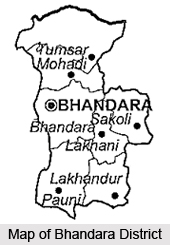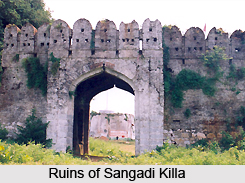 Bahndra, the `District of Lakes` is the administrative district in the state of Maharashtra.The place is famous for its rice production. Bhandara town is also known as `Brass City` owing to the presence of a large brass products industry.
Bahndra, the `District of Lakes` is the administrative district in the state of Maharashtra.The place is famous for its rice production. Bhandara town is also known as `Brass City` owing to the presence of a large brass products industry.
Geography of Bahandara
Bhandara is an important district of Maharashtra. The area of the district is 3890 km². The place is located at 21.17° N 79.65° degree East and has an average elevation of 244 metres.
Economy of Bhandara
The economy of Bhandara is mixed with agriculture, industries and forest resources.
Bhandara District is mainly the paddy growing area. There is also a vast teak forest here. The main industries of the district are Rice Mills, Poha Mills, Bidi manufacturing, Saw Mills, Brass manufacturing units, Ceramic Bricks, Engineering workshop etc. Tumsar, a tahsil town, is a famous rice market. The minerals found here are iron, gold,laterite, shale, sandstone.
Ashok Leyland, a Hinduja Group Company, has a production facility at Gadegaon near Bhandara. Sunflag Iron Steel company and Shivmangal Ispat Pvt. Ltd. are other major industrial undertakins in the district.
Demography of Bhandara
 As per the 2001 census, the population of Bhandara is1, 136,146 of which 15.47% are urban. Males constitute 51% of the population and females 49%. Bhandara has an average literacy rate of 80% which is higher than the national average of 59.5%. The male literacy rate is 85% and the female literacy rate is 75%.
As per the 2001 census, the population of Bhandara is1, 136,146 of which 15.47% are urban. Males constitute 51% of the population and females 49%. Bhandara has an average literacy rate of 80% which is higher than the national average of 59.5%. The male literacy rate is 85% and the female literacy rate is 75%.
Flora and Fauna of Bhandara
More than one third of the area of the district lies under jungle that yields gum, medicinal fruit and nuts, edible fruits, lac. honeyand the blossoms of the mahuci tree.
The principal crops are rice, wheat, millet, other food-grains, pulse, linseed and sugarcane. The fauna found here are tigers, panthers, deer, wild hogs.
Places of attraction in Bhandara
The important places of attraction in Bhandara are:
• Ambagar Fort
• Andhalgaon
•Adyar
•Bondgaon
•Brahmi
•Bawanthadi
•Chaundeshwari
•Chichgad
• Dighori
•Gosikhurd Project
• Gaimukh
• Gondumri
• Koka
•Korambhi Devi
•Pawni Killa
• Pandey Mahal
• Rawanwadi
•Sangadi Killa
• Shivani Bandh
• Sindhpuri Bodh Vihar



















